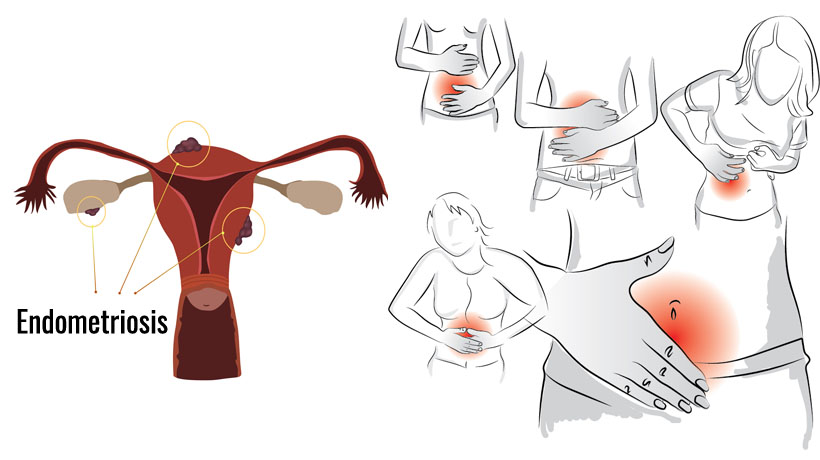For some women, cramping during menstruation isn’t overtly out of the norm. Heavier periods are regular for many, and painful intercourse every so often doesn’t lift any red flags. That’s why, as the Endometriosis Foundation of America reports, it takes on average 10 years to correctly diagnose endometriosis, a condition which affects roughly 10 percent of women.
This sneaky and often agonizing condition is a disease of menstruation, occurring in women during their fertile years. In it, endometrial tissue – or tissue from the lining of the uterus – migrates outside of the womb and adheres to nearby body parts, causing a painful inflammatory response. It’s important to be able to recognize the telltale symptoms of endometriosis, particularly those signs most frequently neglected. Here’s a list of five common symptoms: how to spot them and when to get checked.
Killer cramps
Because they’re so prevalent in women during menstruation, this hallmark symptom is often overlooked. How to distinguish normal cramps from endometrial cramps? Severity. According to the Endometriosis Foundation of America, abdominal pain due to endometriosis can be so severe that it often prevents women from partaking in daily activities. If your cramping is abnormally debilitating and doesn’t go away after popping one or two Ibuprofen, it warrants a checkup.
Heavier periods (menorrhagia)
Heavy menstruation is another sign that can be easily neglected if your periods are heavy regardless. However, while menstruating with this condition, endometrial growths react to hormones and bleed in the same way that the endometrium does, causing a stronger flow. If you’re experiencing an unusually heavy period, you might be exhibiting a symptom of endometriosis.
Gastrointestinal complications
Because endometrial tissue can cause growths in the bowels, another common sign of endometriosis is a pain when you pee. It’s a symptom so common that it’s often confused with irritable bowel system (IBS), making a correct diagnosis tricky. But if you experience constipation, diarrhea, nausea or even rectal bleeding, it’s recommended that you get checked.
Infertility
According to the American Society for Reproductive Medicine, up to 30-40 percent of women who experience endometriosis also suffer from infertility. While one does not necessarily cause the other, infertility and frequent miscarriages might indicate endometriosis.
Painful sex
Pain during intercourse is (unfortunately) commonplace in many women, making it difficult to distinguish between “normal” discomfort and pain from endometriosis. Although it might seem typical, it’s a symptom which shouldn’t be neglected. Play it safe. If you experience pain during any sexual encounter, even during masturbation, it is recommended that you get checked.
Sources:
https://www.endofound.org/endometriosis
https://www.mayoclinic.org/diseases-conditions/endometriosis/diagnosis-treatment/drc-20354661
http://www.health.com/menstruation/endometriosis-symptoms
https://www.medicalnewstoday.com/articles/149109.php
https://www.self.com/story/5-signs-you-might-have-endometriosis



